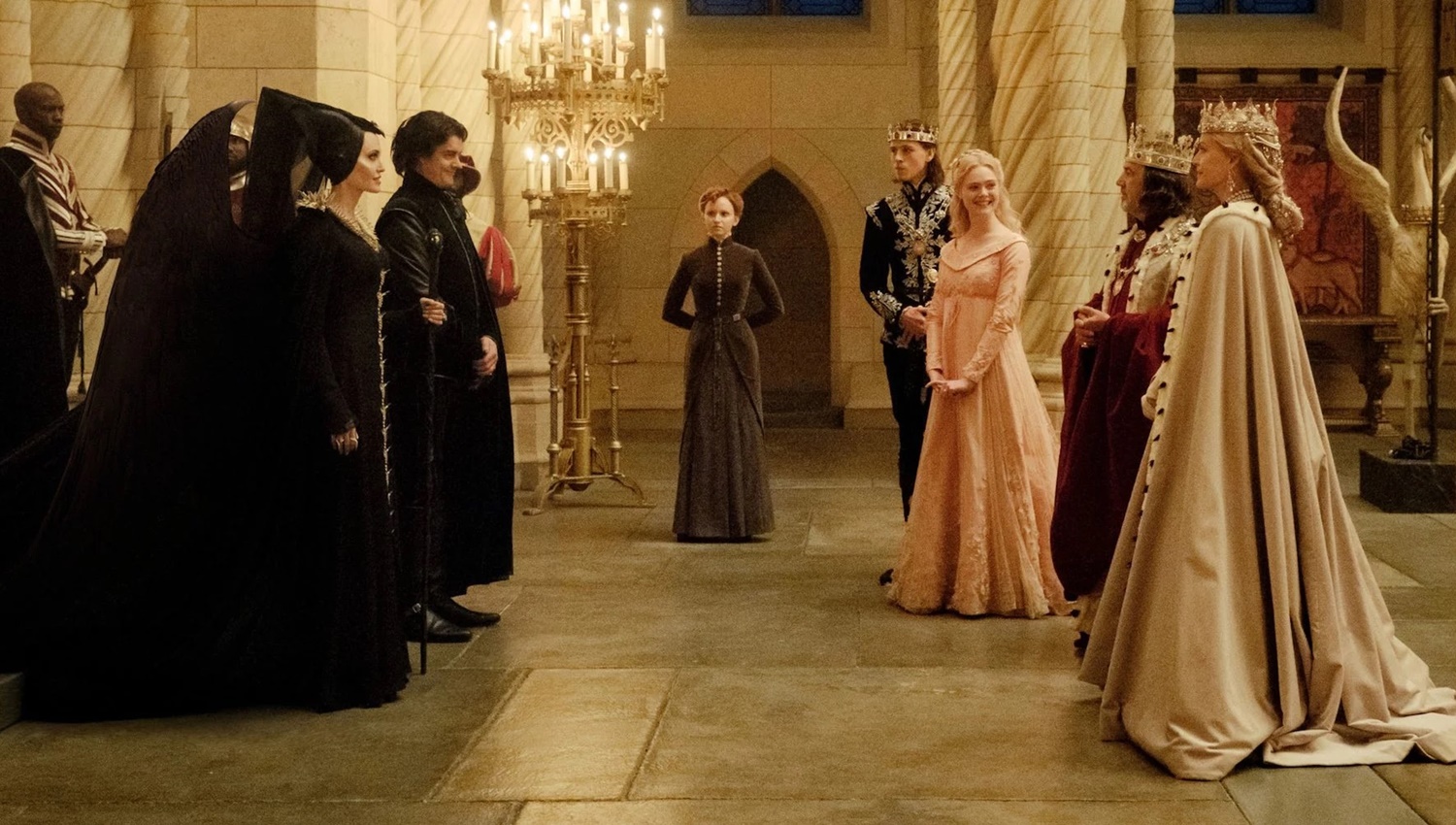
Maleficent: Mistress of Evil
Dustin Chase
The strides Disney made with the original “Maleficent” (2014) are lost and forgotten in the sequel that reunites Oscar-winner Angelina Jolie with those squared cheekbones and devilish horns. The opening sequence is a conglomeration of over-saturated and mediocre CGI, reacquainting audiences with the fairytale land of The Moors and creatures therein. The narration informs us that humans have forgotten what Maleficent did in the last movie, and once again view her as evil and terrifying. Audible gasps from reviewing press revealed the awkward stupidity the script uses to clear the board so they can repeat the same good versus bad ideology we saw last time. The most notable addition here is Oscar-nominee Pfeiffer playing one of Disney’s darkest on-screen villains to date. Ellen Mirojnick’s costume design is quite stunning, especially draping Pfeiffer’s queen in all white.
The no-longer-sleeping beauty Aurora (Fanning) is now Queen of The Moors, beloved by all the fairy creatures she protects. Prince Philip (Dickinson) comes to join their two bordering kingdoms, asking for her hand in marriage. While celebrations are being planned, Aurora and her godmother, Maleficent (Jolie), are invited to the Castle at Ulstead for dinner. King John (Robert Lindsay) and Queen Ingrith (Pfeiffer) put aside their fear of Maleficent and attempt to accept her into the family. However, the evening ends in disaster with the king under a spell. Maleficent is blamed and flees the kingdom while Aurora and Phillip proceed with wedding plans. The queen readies for war between humans and non-humans, invoking fear in her people that the two groups cannot peacefully coexist.
Of all the problematic issues plaguing this sequel, the writing behind the character of Aurora is the worst.
Of all the problematic issues plaguing this sequel, the writing behind the character of Aurora is the worst. Whether it’s Fanning’s performance or simply various writers desperately trying to find something for the weak and naïve character to do, the film is at it’s worst when she’s driving the narrative. Disney has a long history of pitting two female characters against each other. That is repeated here with some of the male characters (especially the humans) coming off as more dim-witted than the females. Aside from Pfeiffer’s villainy, and extravagant costuming, reversing stereotypes on characters cloaked in black with horns, versus those fair and in white, would be something to celebrate if “The Huntsman: Winter’s War“ hadn’t tried something similar. There is little to celebrate as the story reveals itself to be predictable, even the jokes fall flat and silent.
“Maleficent’s” dependency on visual effects over practical ones is a hindrance, something many of Disney’s films are guilty of. There are far too many subplots occurring in this story. Maleficent discovering her origins totally disengages her character from the main plot of the film, for a time. Aside from the opening moments and the final ones, Jolie doesn’t do as much this time around. Something else I can’t understand in films like these is why storytellers want to kill a character only to bring them back less than two minutes later? What effect does that serve? Sure in soap operas or fantasy sagas characters often die and then return after some time, struggle or reincarnation. But this tactic does a further disservice to this story with no real means to an end. You might find underlying themes in “Maleficent” about “kingdoms” living together in harmony, but either the minds at Disney are too scared to lean into such a sensitive subject, or the filmmakers don’t quite know how to juxtapose fantasy with reality in this case.
Final Thought
Maleficent Mistress of Evil proves itself another unnecessary sequel by abandoning the ideology and creativity that made the original quite surprising.
